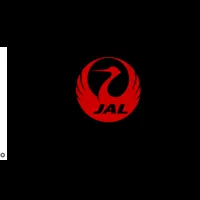
Sojern's 2025 Destination Marketing Report: Trends and Insights
Sojern's 2025 Destination Marketing Report
Sojern, a leading digital marketing platform tailored for the travel industry, has launched the State of Destination Marketing 2025 report. This comprehensive document is a collaboration between Sojern and Benchmark Research Partners, with support from notable organizations like Brand USA, Destination Canada, the European Travel Commission, and the Caribbean Tourism Organization. The report builds upon findings from 2024, shedding light on the current trends influencing destination marketing.
Key Findings from the Report
One of the most striking insights reveals that 85% of Destination Marketing Organizations (DMOs) are either maintaining or increasing their digital advertising budgets compared to the previous year. Noreen Henry, Sojern's Chief Revenue Officer, emphasized the importance of demonstrating a solid return on investment (ROI) as DMOs allocate more funds to these initiatives. This includes adopting advanced tools and data strategies to capture travelers’ attention across the marketing funnel.
The report gathered data from close to 200 DMOs globally, showcasing the resilience of digital advertising amidst financial challenges. However, DMOs are not without their obstacles. They face pressure to deliver clear results while engaging in increasingly complex multichannel campaigns. Currently, while 60% of DMOs focus on clicks as their primary success metric, almost 54% struggle to prove a clear ROI. Furthermore, 37% highlight tracking and attribution as significant hurdles in managing comprehensive campaigns.
The Rise of Programmatic Advertising
With a notable 83% of respondents focusing on programmatic advertising, decision-making based on precise data analysis is becoming essential. Programmatic advertising’s traceability and cost-effectiveness are crucial for DMOs in today’s data-driven market.
When it comes to the channels utilized, display ads dominate with 97%, followed by social media advertising at 90% and search engine marketing at 80% being crucial aspects of DMOs’ paid media strategies.
AI's Transformational Role
Artificial intelligence (AI) is making significant strides in destination marketing. Currently, 63% of DMOs utilize AI for content creation; however, a mere 28% employ it for data analysis. This indicates a vast opportunity for DMOs to delve deeper into AI's capabilities for enhanced insights and strategic decision-making in their marketing approaches. Addressing the gaps in resources and training will be essential for unlocking AI’s potential in the industry.
Shifting Campaign Strategies
Traditionally, DMOs favored seasonal campaigns; however, the report indicates that 52% are now leaning towards continuous campaigns compared to 40% who prefer seasonal approaches. Continuous campaigns not only yield results but are believed to significantly raise brand awareness.
While DMOs are improving their focus on specific audiences—66% are targeting outdoor enthusiasts—only 15% utilize advanced personalization techniques that dynamically adjust offers across channels in real time. This leaves a tremendous opportunity to enhance traveler experiences at every stage of their journey.
Reprioritizing Brand Awareness
Since the pandemic, DMOs had to prioritize immediate bookings to revive the travel industry. However, as stability returns, there is a notable shift towards long-term strategic initiatives, with brand awareness taking precedence. The report reflects that campaign strategies are now evenly divided—50% targeting specific stages versus full-funnel strategies, a considerable change from 2024 when full-funnel strategies dominated at 70%.
Navigating Data Challenges
Data remains a powerful tool for DMOs, yet many struggle to maximize its use effectively. Over half of the respondents (51%) identified data analysis as a major challenge, and 45% have difficulty turning insights into actionable strategies. Nonetheless, these challenges create pathways for DMOs to leverage data-driven marketing.
The Growth of Cooperative Marketing
Cooperative marketing is on the rise, especially in Europe where participation has increased by 16% year-on-year. Collaborating with hotels, attractions, and airlines enables DMOs to pool resources, extend campaign reach, and enhance overall effectiveness.
Embracing Social Media and Video Content
Social media continues to play a crucial role, with 91% of DMOs using it for marketing, while platforms like Facebook and Instagram rank among the top five channels. However, there is a growing trend towards connected TV (CTV) and short-form video formats, yielding immense potential for captivating and visually immersive marketing campaigns.
To conclude, the State of Destination Marketing 2025 report offers valuable insights into key trends shaping the future of destination marketing. With a focus on leveraging advanced technologies and data analysis, DMOs can enhance their strategies and drive growth in an ever-evolving travel landscape.
Topics Travel)










【About Using Articles】
You can freely use the title and article content by linking to the page where the article is posted.
※ Images cannot be used.
【About Links】
Links are free to use.